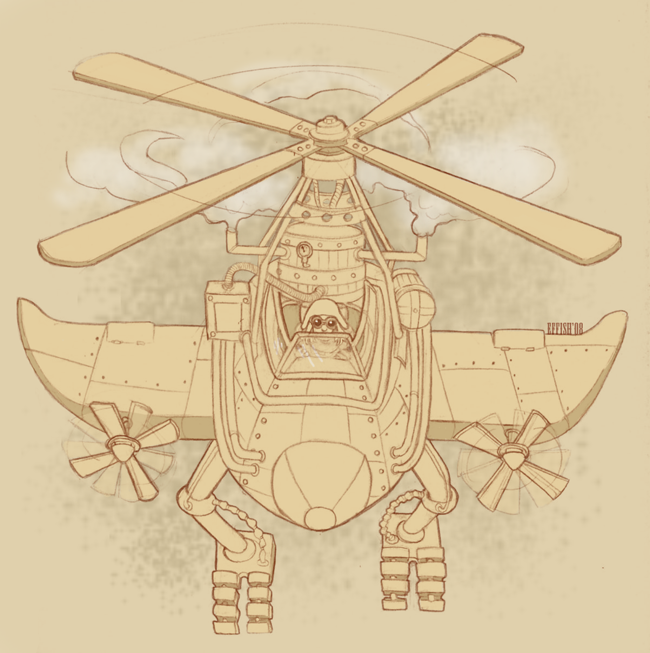THE UNITED PROVINCES OF AURELIA: A HISTORY
PREHISTORY: CAVEMEN AND GNOBSTEMS
The oldest traces of Humanoid life in Aurelia can be traced to the Buwvenian cave paintings and the small assortment of flint tools found inside as well that can be dated to 1.6 million years ago. The paintings depict another humanoid race with a distinctive twin horned crest of bone and a red pigment skin which is a commonly found fixture in many race's mythology and ancient records.
From what was around 8,000 BCE as the global climate warmed the inhabitants of the large peninsula of Aurelia gradually became sedentary and a strong demographic and agricultural upsurge continued till around 4,000 BCE metallurgy first appeared. There numerous megalithic structures across Aurelia the largest being the monumental standing stones of Egnehenots and the network of mounds and burial sites around it.
ANTIQUITY: POPLOS AND THE FRAULLICS
In 800 BCE the city of Fraum was founded along the Eastern shore and it was shortly after followed by various other cities coming into existence, the largest being Graz (Present day Griswall) making it the oldest city in Aurelia. At the same time as the city states flourished a new movement of people south brought the Fraullic tribes and came into conflict with them.
.jpg)
Around 400 BCE the Fraullic tribes had conquered the ancient city states and much of Aurelia besides the far western cities of Poplos an ancinet kingdom which under the wise rule of its dynasty of temple-kings rebuffed the attempts of the Fraullics to conquer them. At this time the Fraullics rapidly established themselves as rulers of much of Aurelia and for 200 years they retained this status, but then the Kingdom of Poplos under King Hasmeona the Great marched against them, defeating them in battle after battle till finally a great coalition of the disparate tribes was formed which marched to face him in the Rebit river plains, there King Hasmeona and his well discipline phalanxes crushed the unwieldy Fraullic forces and broke the power of them. However Hasmeona's death shortly afterwards left Poplos without a ruler and with no heir the kingdom collapsed, returning Aurelia to it's former state of citystate-versus-citystate as Poplos retreated back to its cities and left the now devastated lands of the Fraullics to themselves.
In 280 ACE the Fraullics suffered another major crisis as the Saltric elven horse tribes came south, the elves smashed down upon the still weak Fraullic tribes and till 500 ACE the Fraullics were plagued by their constant attacks, but their situation grew better as the Hanorvian tribe grew ascendant from its city state of Lugyon and turned back the last great attack by the Saltrics. By 312 ACE the Hanorvians had forced even the Kingdom of Poplos to bend its knee to their kings, during this period High King Alosisu built the Htnirok walls along the North-west plains of Aurelia to end the Saltric raids forever (from then on the Saltrics were limited to small raiding parties whose damage was greatly scaled back by the garrisons of the wall).
However in 580 ACE a major earthquake destroyed much of Lugyon and broke the Hanorvian hegemony and five new kingdoms arose which battled constantly among each other with none gaining the upperhand. By then a new wave of Barbarian attacks from the north had emerged as a great migration of Urmantic Tribes; the Uets, Canutes, Saluts and the Vangri slammed through the now unmanned defenses and swept over Aurelia, settling down and living amongst the Fraullics and Poplosi.

The result of these invasions was the clear division of Aurelia into 6 new kingdoms by 650 ACE, however these kingdoms were short to last as the Northern Kingdom then Empire of Aurell brought the others under its control (The concept of Aurelia emerged during this time corresponding to the range of settlements under the control of this ancient kingdom. The Aurells were an Urmantic tribe that embraced the Fraullic-Poplosi culture and they were great engineers, constructing grand cities and other wonders during their rule. Under the Karlonvengian Dynasty the Kingdom of Aurelia became an Empire as they finally brought the island cities and the northern tribes under their power.
THE MIDDLE YEARS: KINGS, NOBLES, AND THE GREAT CRUSADES OF RACHTOFF
Gradually the Great Empire of the Karlovengian's grew more and more decentralized, till finally the Emperor's of Aurell held little control beyond the city walls of Pearis. Finally in 1100 ACE the Karlvengians were usurped by the Kapayiets who progressively re-unified the cities and nobles under them. The Kepayiets never regained the northern lands and warred frequently with the people that dwelt there, formost though the Kapayiets progressively centralized and rebuilt the state. However it was at the point in 1390 ACE that the first ships for the West emerged flying their red sails and black flags. The Kepayiets fought bravely but by 1450 ACE the Kepayiets were dead and Pearis was in the hands on the crusaders of Rachtoff from the West.
The arrival of these crusaders were the beginning of a 300 year struggle between the Crusaders and the remnants of the Kingdom of Aurelia, much of Western Aurelia lying in the hands of the crusaders for this period. However steadily the Aurelian successor states drove back the crusader kingdoms as they wore eachother out over years of relentless bloodshed. In those years a new force emerged, the governments of the West and their imperial ambitions, funding poured into the Crusader kingdoms from their respective countries and soon the Crusaders had a technological advantage as well as the advent of gunpowder emerged on Aurelia's fields and soaked them with the blood of brave and ill-equipped knights.

However the Aurelian's were quick to grasp the advantage of this new breed of warfare and in Grand Doge Henri of Harluer they had the man to lead them into this new age of warfare. Under him the Aurelian's collected and under his banner they marched out and ended the threat of the Crusader states and their Imperial masters at the battle of Razgriz. Thereafter the Imperial masters cut their losses and moved their gaze elsewhere while the last crusader holdouts were steadily adsorbed by the citystates and kingdoms of Aurelia.
Finally in 1730 ACE the last crusader fort,
The Angels Grace fell and the land was at last free of all foreigners. Then the Aurelians looked to their own matters, meeting together the city-states and kingdoms swore themselves to a new compact of alliances, The Confederation of Aurelian States.
THE MODERN PERIOD: THE REPUBLICANS AND THE FINAL UNIFICATION
Aurelia had been steadily since the early Middle Ages moving to a more democratic system, the 300 years war and the technological growth it inspired brought it to life, the city-states were already mainly republics and by 1825 the last remaining few kingdoms in a series of peacful revolutions also became Republics. During this period the ideal of a unified Aurelia became highly popular, spurred on by popular sentiment the grand assembly of states in 1857 agreed to unification, the plan was for a three tiered government, National, Provincial and Territorial. In 1868 the First Republic of Aurelia was founded as Prince Charles of St. Ponitere signed the charter(a town of 1,200 on the western coast and the last principality of Aurelia by popular vote).
Shortly after this the National government began a series of major industrialization projects as the government sought to bring Aurelia to the world stage. Before 1850 Aurelia lagged behind the leaders in industrial development. However, the country had considerable assets: a highly skilled labor force, a good educational system, a strong work ethic, and good standards of living. By 1893, the Aurelian's were catching up, and by 1900 Aurelia was a powerful player in industrialization.
In 1800, Germany's social structure was poorly suited to any kind of social or industrial development. The Advent of Republics, produced important institutional reforms, including the abolition of feudal restrictions on the sale of large landed estates, the reduction of the power of the guilds in the cities, and the introduction of a new, more efficient commercial law. Nevertheless, traditionalism remained strong in most of Aurelia. Until 1856, the guilds, the landed aristocracy, the churches, and the government bureaucracies had so many rules and restrictions that entrepreneurship was held in low esteem, and given little opportunity to develop.
From the 1830s and 1840s, the separate states together reorganized agriculture, introducing new crops, yielding a higher level of food production that enabled a surplus rural population to move to industrial areas. The beginnings of the industrial revolution in Aurelia came in the textile industry, and was facilitated by eliminating tariff barriers through the Grand Aeembly's 1834 agreements' or
Veorihne agrrements. The takeoff stage of economic development came with the railroad revolution in the 1840s, which opened up new markets for local products, created a pool of middle managers, increased the demand for engineers, architects and skilled machinists and stimulated investments in coal and iron.The political decisions about the economy of Aurelia were largely controlled by a coalition of "rye and iron" the North Eastern states who contained the largest reserves of iron and coal and the South Western states which were rich in land for foodstuffs.
In machinery, iron and steel and other industries, Aurelian firms avoid cut-throat competition and instead rely on trade associations. Aurelia is a powerful nation because of its prevailing "corporatist mentality", its strong bureaucratic tradition, and the encouragement of the government. These associations regulate competition and allow small firms to function in the shadow of much larger companies.
THE UNITED PROVINCES OF AURELIA
In 1918 the Social Democrats took power, one of their first moves were to redefine portions of the constitution and to acknowledge these changes they decided through a mass referendum to change the name of the First Republic to the United Provinces of Aurelia. Since then the governments have continued to build on their strong position, constructing an armed force that is capable of going toe to toe with any other power in their region.








.jpg)




 1x Thank
1x Thank
